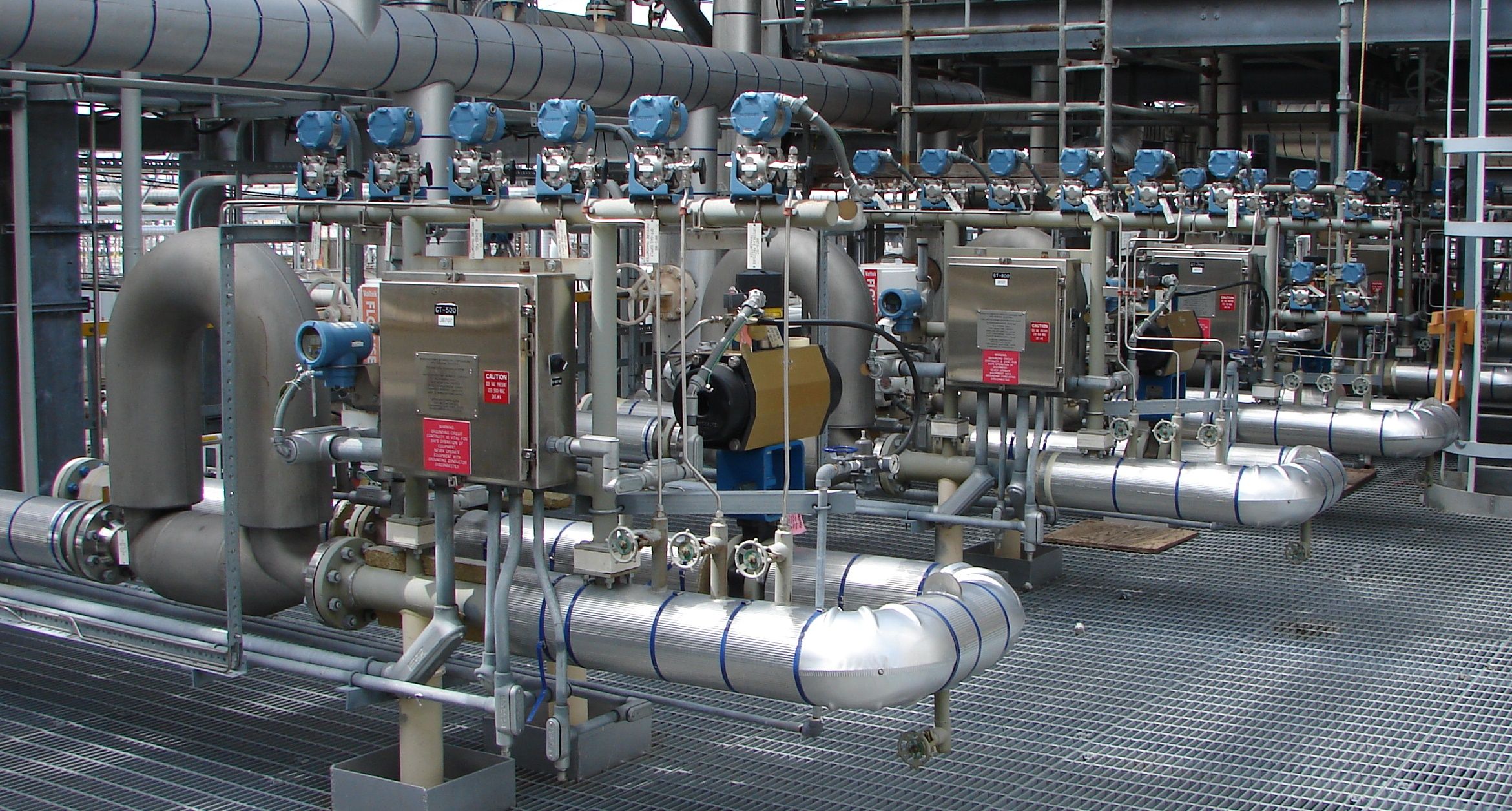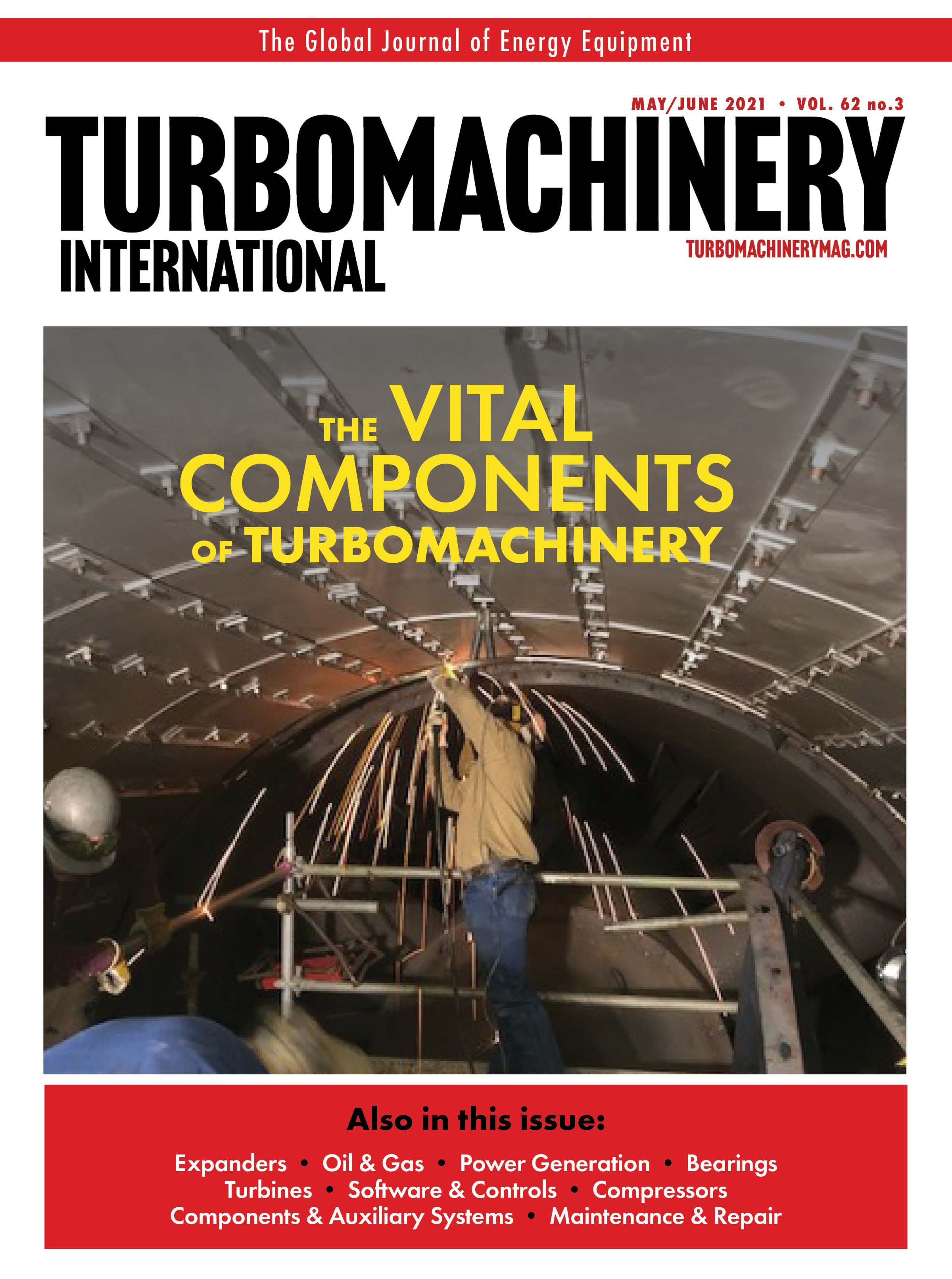Piping and Nozzle Loads
Many factors once considered negligible in ordinary piping may become significant for piping connected to turbomachinery.

Many effects and factors that may have been considered small and negligible in ordinary piping may become significant for piping connected to turbomachinery. These factors include radial movements, support stiffness, nozzle flange movements, and support friction.
Thermal movement in the diametrical direction is usually ignored in ordinary piping systems. But when a restraint is needed to control the piping load to the nozzle, such movements may be significant. Therefore, a realistic analysis of piping/nozzle loads should include radial thermal movement. Often-ignored radial movements may impact some turbomachinery piping systems due to their size and low allowable nozzle loads.
Take the case of 24-inch (DN600) piping for a large turbocompressor. The radial movement for a temperature difference of 200°C is estimated at 0.8 mm. Due to piping rigidity, radial displacement produces a nozzle moment of about 55% of allowable nozzle moment (as per API 617). This effect is greater as size increases; more than 1.1 times allowable nozzle moment for a 32-inch (DN800) piping.
Due to low allowable piping loads, support friction also plays an important role in piping. Low friction surfaces are generally needed at supports and guides near machinery. For a support located 5 meters away from a nozzle, for example, the nozzle and the support each carry a weight load equivalent to 2.5 m of piping. When the nozzle moves, the friction force at the support produces a bending moment at the nozzle. Even with a friction factor of 0.1 (the rated value of common sliding plates), the effect of friction force at one support may constitute about 35% of the allowable load for 20-inch (DN500) piping. This moment increases with size. Thus, low-friction sliding plates are usually needed at supports and guides near turbomachinery.
Support Stiffness
When the piping size reaches 20 inches (DN500) or more, there are few structures that offer effective rigid behaviour restraint. The cross-section of the structure members is generally smaller than the piping cross-section in the range of 24 inch (DN600) or more. The effectiveness of supports and restraints in providing stiffness depends mainly on the framework.
It is best to include support stiffness in a structural analysis to confirm/determine nozzle loads. But it is vital to differentiate between support stiffness and piping stiffness. Another point to consider is that when such support stiffness is included, piping stresses and reaction loads are usually reduced. The addition of support stiffness usually provides more system flexibility and lowers the overall level of stress and loads. Therefore, such an inclusion is strongly recommended if nozzle loads are marginally high.
Nozzle flange movement is also important. The connecting nozzle flange moves due to thermal movements in the turbomachinery casing. Although they may be small, these movements can have a significant effect on nozzle loads. This is similar to piping radial movements. The effect of nozzle movement is especially important when restraints are needed nearby to control loading. As the casing temperature distribution of turbomachinery can be complicated, such nozzle movements should be provided by the manufacturer. Movements estimated from arbitrary casing temperature distributions and assumed support functions are generally inaccurate.
Piping Weight
Thermal load is difficult to control. But weight load is more manageable. This is why some codes insist that piping dead weight is entirely supported by piping hangers or supports.
There are two main types: rigid support and spring (or resilient) support. A rigid support can be used only at a location that has negligible vertical thermal movement. Rigid supports should be used whenever feasible as they are simpler, cheaper, and more stable. They can absorb load fluctuations. However, there are many locations where rigid support is not possible.
In many piping systems, the first support at the discharge piping is generally the spring type (such as a variable spring hanger). Any vertical force will create a large overturning moment in any overhanging piping configuration used in turbomachinery. When there is a spring support at the proper location, the spring can be selected and adjusted to take piping weight away from the nozzle connection.
If the support is located far away from the weight center, there could be problems. In this case, the piping weight can be reduced to near zero, yet the coupling of the spring force and weight creates a large bending moment on the nozzle. This is due to the distance between the spring support and the weight centre. This moment can be more damaging than the piping weight itself. ■
Amin Almasi is a Chartered Professional Engineer in Australia and U.K. (M.Sc. and B.Sc. in mechanical engineering). He is a senior consultant specializing in rotating equipment, condition monitoring and reliability.
